
The names of all persons who have contributed to the work of the INCA Consortium are listed here according to task or working group.
(a) Management of proposals and versions of the Input Catalogue:

(b) Astrometric data collection, analysis and reduction to FK5:

(c) Collection, analysis and homogenisation of astrophysical data:

(d) New ground-based astrometric observations and measurements:

(e) New photometric data compilation, observations, and photometric calibrations:

(f) Mission simulations:

(g) Double and multiple stars:

(h) Variable stars:

(i) Linking the Hipparcos frame to an extragalactic frame:
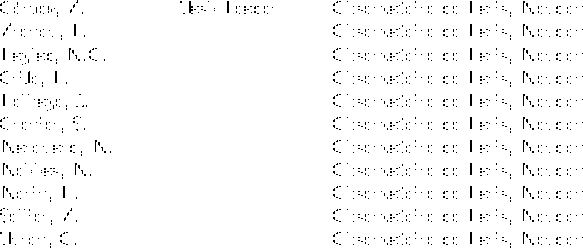
(j) Minor planets and satellites:

(k) Stars in selected galactic clusters:

(l) Stars in the Magellanic Clouds:
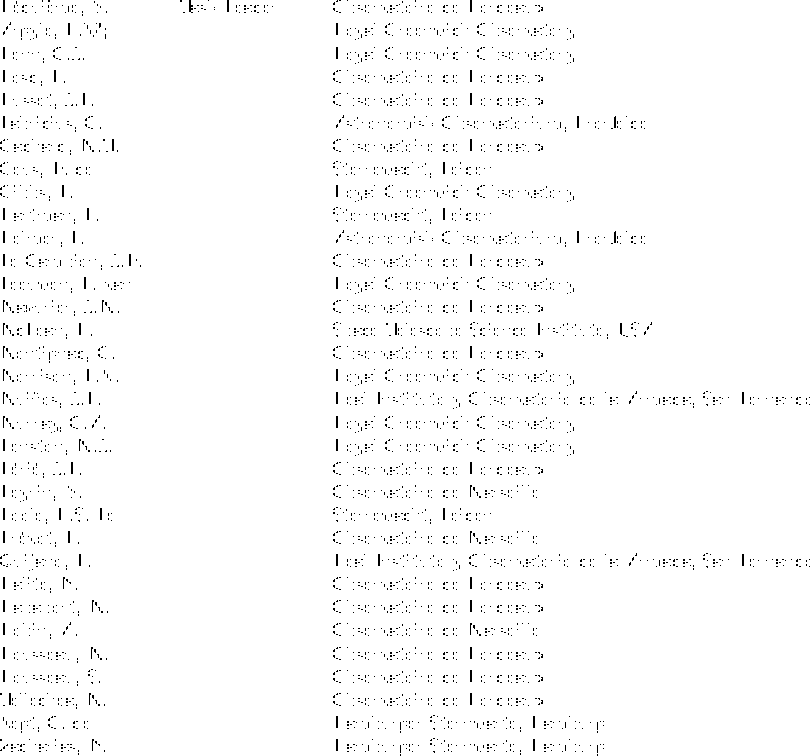
The activities on double and multiple stars included the participation of the Commission des Etoiles Doubles (Société Astronomique de France) and of a German group of amateur astronomers (Heidelberg).
The variable star work included the participation of the AAVSO staff (USA), AFOEV, CRIM and INRIA (France).
The proposals submitted by the scientific community were reviewed by a peer committee, established under the guidance of the ESA Astronomy Working Group. The composition was as follows:
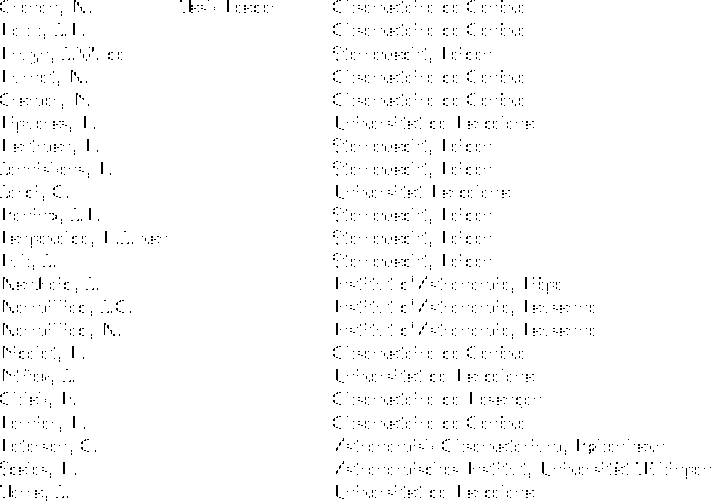
This Scientific Selection Committee met on three occasions. At the first meeting, general priorities were assigned to proposals or subsets of the proposals.
At the second meeting, after the results of the first round of simulations had been made by the INCA Consortium, and after proposers had been invited to comment on the general recommendations of the Committee, the preliminary recommendations were reviewed. Members of the INCA Consortium presented the simulation results, and the Selection Committee recommended topics for further study.
At the third meeting of the Selection Committee, the INCA Consortium made a detailed presentation of the results of the selection process, showing the extent to which various proposals and categories of proposals had been included in the Input Catalogue.
The various meetings of the Selection Committee were also attended by the leaders of the Hipparcos Data Reduction Consortia, who were able to provide advice on technical aspects of the data analysis which might impact on considerations of the Input Catalogue compilation.
In June 1988, the INCA Consortium distributed, to each of the proposal Principal Investigators, a listing of the stars from the original proposal finally contained in the Input Catalogue. A second opportunity was provided for comments on the listing. In this way, since the observing programme for the Hipparcos satellite would not be changed throughout the mission, proposers were given the opportunity to comment on the selection, achieved amongst the stars they had proposed, until just a few months before the satellite's launch.
The following table lists the proposals received by the European
Space Agency as a result of the Invitation for Proposals issued in
1982. For each proposal, the Principal Investigator, institute,
and title of the proposed investigation are listed.
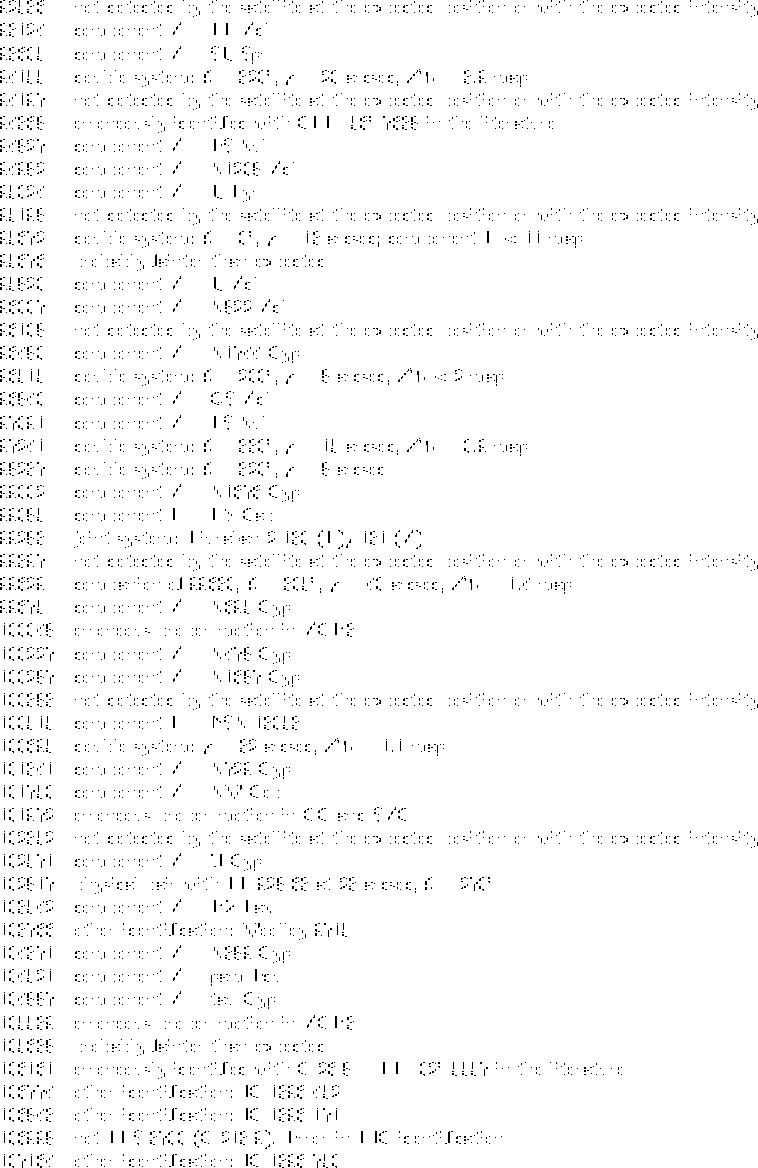
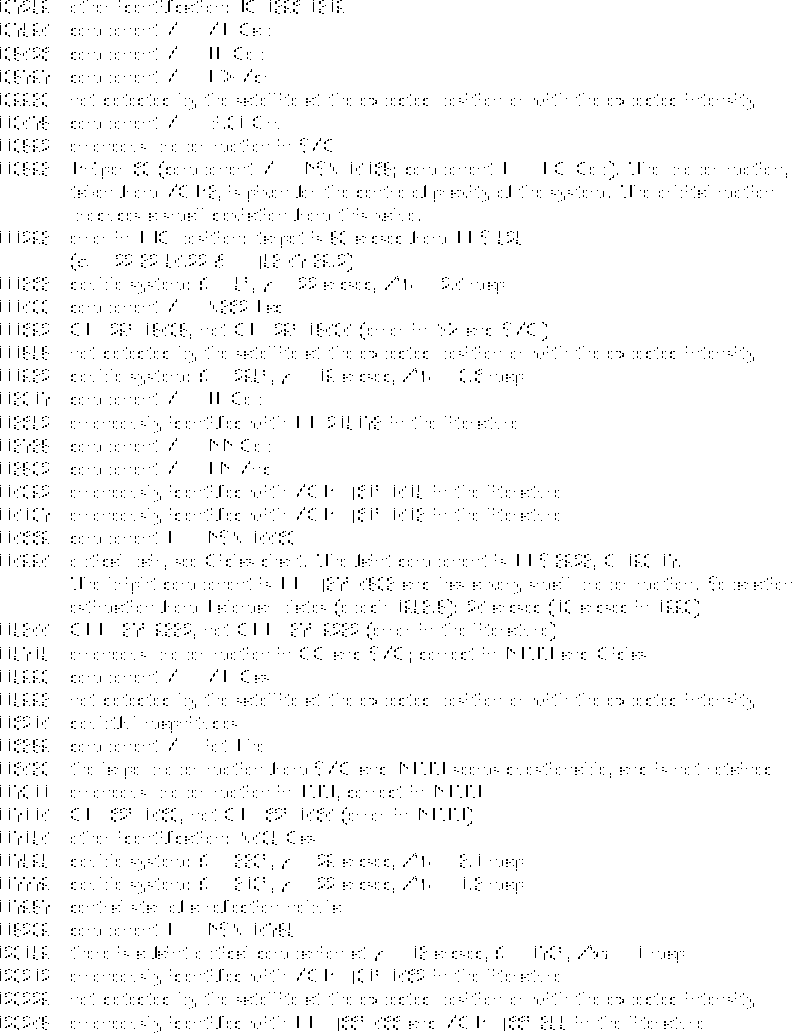

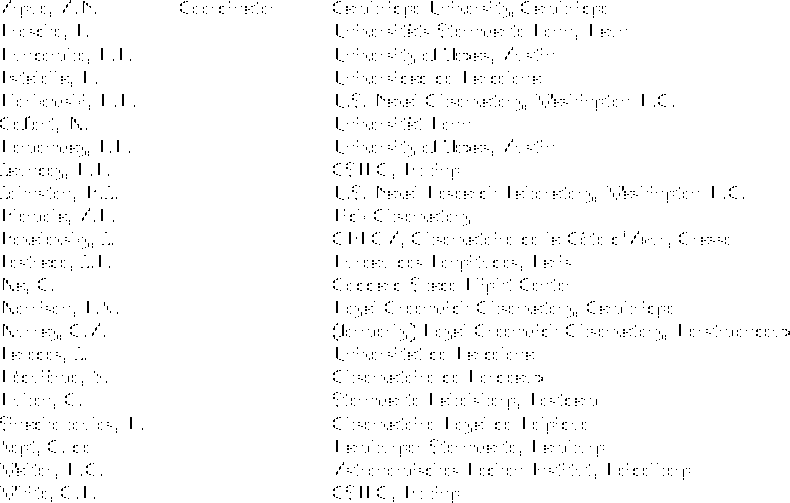
 Original proposal withdrawn and replaced by this proposal
Original proposal withdrawn and replaced by this proposal Proposal deleted (no data)
Proposal deleted (no data)
The work of the participants of the INCA Consortium is supported and funded by national agencies through their respective institutes. The lists of funding authorities and main participating institutes are given, for each country, at the beginning of this volume.
The work performed in Australia, dealing with radio stars and the Hipparcos/Hubble Space Telescope link, is supported by the Australia Telescope National Facility of CSIRO. G.L. White was supported in part by an Australian National Research Fellowship. The use of `Starlink', and of the other facilities at the Anglo-Australian Observatory, are acknowledged.
The work performed in Belgium deals mainly with double and multiple star systems. J. Dommanget is particularly indebted for financial support to the Fonds de la Recherche Fondamentale Collective (Bruxelles) under convention 2.9009.79 for the period 1979-87, and the Fonds National de la Recherche Scientifique, Crédits aux Chercheurs, under conventions No. 1.5.388.88F for the period 1988-90 and 1.5.179.91F for the period 1991-93. The Commission des Communautés Européennes provided a grant (No. SC1-0057) for the period 1989-90.
The work performed in Denmark, dealing with new astrometric and photometric observations, and the participation in the operation of the Carlsberg Automatic Meridian Circle, is supported by the Danish Space Board, the Danish Natural Science Research Council and the Carlsberg Foundation.
The work performed in France (mainly new astrometric observations and measurements, work on variable stars and minor planets and satellites, mission simulations, production of the successive versions of the Input Catalogue, and coordination of the Consortium) is supported by the Centre National d'Etudes Spatiales (CNES), the Centre National de la Recherche Scientifique (CNRS), the Institut National des Sciences de l'Univers (INSU), and, through the support of each participating Observatory and of the Bureau des Longitudes, the Ministère de l'Education Nationale (MEN). The Ministère de l'Education Nationale is also acknowledged for special support for observations with the automatic meridian circle at the Bordeaux Observatory. The SIMBAD project is supported by INSU. The Centre National d'Etudes Spatiales is also acknowledged for grants for operating the two data bases: SIMBAD, and INCA. The host of the two data bases was the Computer Centre of Paris-Sud University (Paris-Sud Informatique) from 1985 to 1990, and its director, J.B. Johannin, is especially acknowledged for his constant support. Acknowledgements are also due to the Ministère de l'Education Nationale, de la Jeunesse et des Sports, the Ministère de la Recherche et de la Technologie, and the Ministère des Affaires Etrangères, for their support through a European research network.
The work performed in Germany deals mainly with astrometric compilation and analysis, measurement of cluster stars and double star positions and the preparations for the linking of the Hipparcos reference frame to the radio/extragalactic frame. The work of the Astronomisches Rechen-Institut Heidelberg is mainly financed by the Ministerium für Wissenschaft und Kunst (MWK), Stuttgart, of the Land Baden-Württemberg (Kapitel 1497). Additional support is provided by the Bundesministerium für Forschung und Technologie (BMFT), Bonn, of the Federal Republic of Germany, through the Deutsche Forschungs- und Versuchsanstalt für Luft-und Raumfahrt (DFVLR), Köln, under Project No. 01000421 (Project Leader: R. Wielen). The work at Hamburg Observatory is financed by BMFT under Project No. 100013-8 (Project Leader: Ch. de Vegt). The work at the University of Bonn is financed by BMFT under Project No. 0100023-6 (Project Leader: P. Brosche).
The work performed in The Netherlands at Sterrewacht Leiden, dealing with new astrometric measurements and photometric observations, is supported by Leiden University, in turn supported by the Ministerie voor Onderwijs en Wetenschappen.
The work performed in Spain by the Real Instituto y Observatorio de la Armada and by the Universitat de Barcelona, dealing with new astrometric and photometric observations, variable stars and minor planets, and the participation in the operation of the Carlsberg Automatic Meridian Circle, is funded by the Comisión Interministerial de Ciencia y Tecnología (CICYT), Dirección General de Investigación Científica y Técnica (DGICYT) and Estado Mayor de la Armada. For the period 1981-85, financial support was provided by the Comisión Nacional de Investigación del Espacio (CONIE). The Comissió Interdepartamental de Recerca i Innovació Tecnològica (CIRIT) is also acknowledged.
The work performed in Switzerland, dealing with new photometric observations, photometric data compilation, and mission simulations, is financed by the Universités de Genève and Lausanne, and the Fonds National Suisse de la Recherche Scientifique.
The work performed in the United Kingdom, dealing with new astrometric measurements and observations, the linking of the Hipparcos reference frame to the radio/extragalactic reference frame and double star observations, the participation in the operation of the Carlsberg Automatic Meridian Circle, and travel funds, is supported and funded by the United Kingdom Science and Engineering Research Council (SERC). The support of the Royal Greenwich Observatory for the measurements of positions of faint stars in the Cape Zone, and of Cambridge University for the work on double stars and the reference frame link, is also acknowledged.
The work performed in the United States of America by the Hubble Space Telescope Astrometry Team in preparation of the link of the Hipparcos reference frame to the radio/extragalactic reference frame, through the use of the Hubble Space Telescope Fine Guidance Sensors, is supported by the Astronomy Department of the University of Texas and NASA (NASA contract NAS 8-32906 and NASA grant NAGW-233).
The work performed by the world-wide network of observers and the American Association of Variable Star Observers (AAVSO), under the direction of Dr J.A. Mattei, before and during the Hipparcos mission, and the support of this work by NASA (NASA grant NAGW-1493), is acknowledged.
Acknowledgements are particularly due to the staff of the Centre de Données Astronomiques de Strasbourg, Observatoire de Strasbourg, for their constant and efficient help in the creation and operation of the INCA Data Base, stemming from the SIMBAD Data Base and mainly operated using its basic software.
The support of the Centre National d'Etudes Spatiales (CNES) in mission simulations, through the assistance of personnel and the use of the Toulouse computer, the host of the complete simulation chain, is gratefully acknowledged.
The Guide Star Catalog Team of the Space Telescope Science Institute (STScI), Baltimore, and particularly B. McLean, is gratefully acknowledged for the efficiency with which they answered requests about certain stars left without measurements at the end of the INCA Consortium's ground-based observing programmes.
The Royal Greenwich Observatory and the Hamburg Observatory are acknowledged for the use of the CPC2 Catalogue prior to publication, as a joint contribution from these observatories.
Many observers, in various observatories, undertook extensive measurement programmes related to the Hipparcos Input Catalogue preparation (astrometric observations and measurements, photoelectric observations, special observations of double and multiple systems). The work performed and the support they received from their respective institutions is gratefully acknowledged. The support of the management and staff of the European Southern Observatory (ESO), of the Carlsberg Automatic Meridian Circle (operated jointly by the Copenhagen University Observatory, the Royal Greenwich Observatory and the Real Instituto y Observatorio de la Armada en San Fernando) and of the Bordeaux automatic meridian circle, is especially acknowledged.
For the work on variable stars, and especially large-amplitude variable stars requiring the use of ephemerides for their efficient observation by Hipparcos, acknowledgements are due to the AAVSO and AFOEV staff and observers, to O. Gascuel and J. Quinqueton of CRIM (Centre de Recherches en Informatique de Montpellier), to E. Diday of INRIA (Institut National de Recherche en Informatique et Automatique), and especially to A. Schütz, P.E. Davies and A.J.C. McDonald of ESOC (European Space Operations Centre).
Numerous individuals participated in the preparation of the link of the Hipparcos reference frame to an extragalactic reference system. Full acknowledgements to the participating institutes have been given in ESA-SP 1111, Vol. II.
For the preparatory work on minor planets and satellites, and also for the ephemerides of major planets, the Bureau des Longitudes (Paris) is particularly acknowledged.
The INCA Consortium acknowledges the careful work of reviewing the astronomical proposals submitted to ESA by the Scientific Selection Committee and especially to the Committee's Chairman, Professor A. Blaauw, for his enthusiastic involvement in the work of the Consortium.
The staff of the ESTEC Hipparcos Project Team (under Project Managers L. Emiliani and H. Hassan), in particular M. Schuyer, R.D. Wills, S. Vaghi and R. Bonnefoy, are thanked for the many helpful exchanges throughout the preparation of the Hipparcos Input Catalogue. The staff of the ESA Operations Centre (ESOC), and in particular A. Schütz, were responsible for the implementation of the Hipparcos Input Catalogue, and their work under the Ground Segment Manager, J. van der Ha, and the Spacecraft Operations Manager, D. Heger, was an important contribution to the proper functioning of the Hipparcos Input Catalogue after the satellite launch.
The INCA Steering Committee, on behalf of the entire INCA Consortium, would like to use this opportunity to give recognition to the impetus given to the Hipparcos project in its early phases by the late Professor W. Fricke, and to the effective support he brought to the work of preparation of the Input Catalogue.
The INCA Team Leader wants to highlight her deep appreciation for the dedication shown by the Hipparcos Project Scientist in ESA, Dr M.A.C. Perryman, and in particular for his unremitting and stimulating interest in all parts of the work performed in the INCA Consortium and of all its connections with other parts of the Hipparcos work.